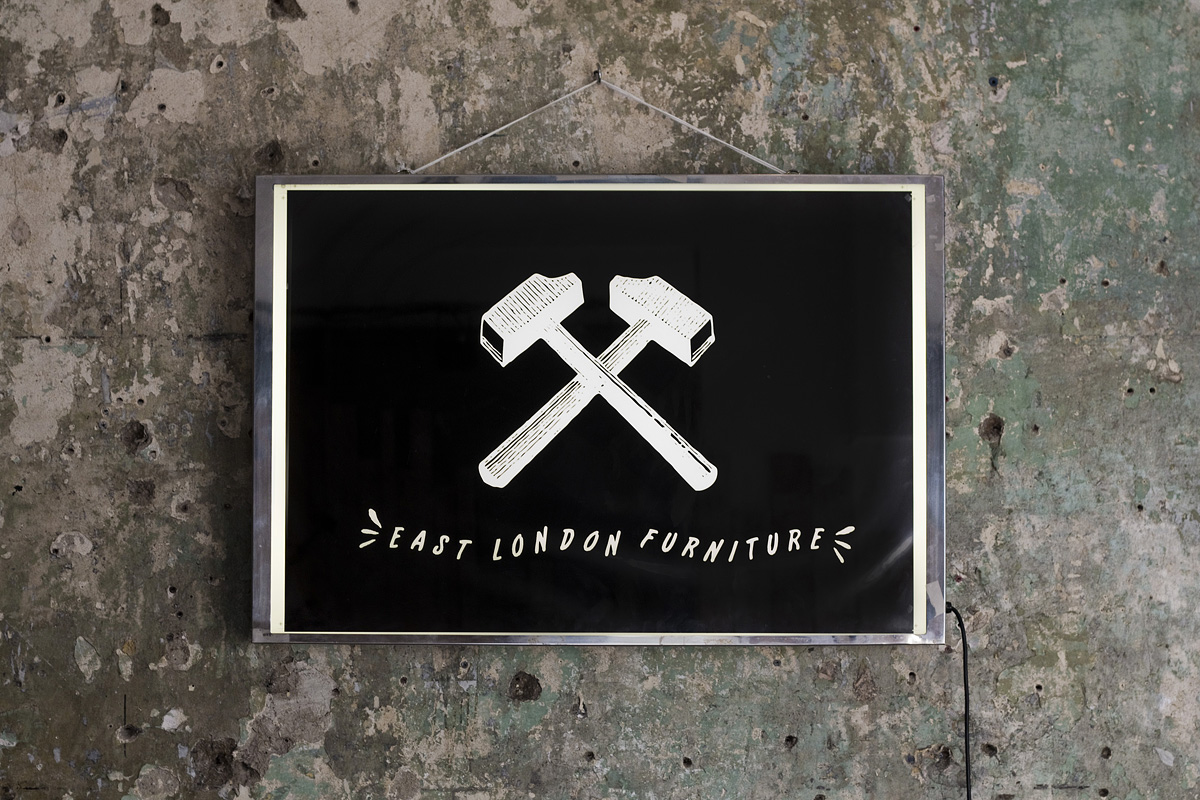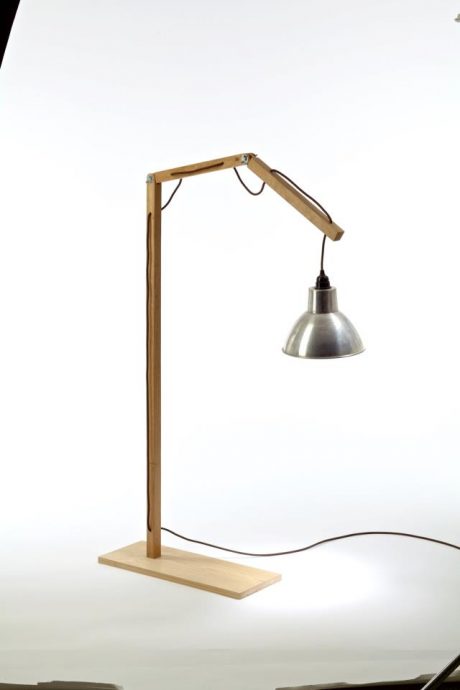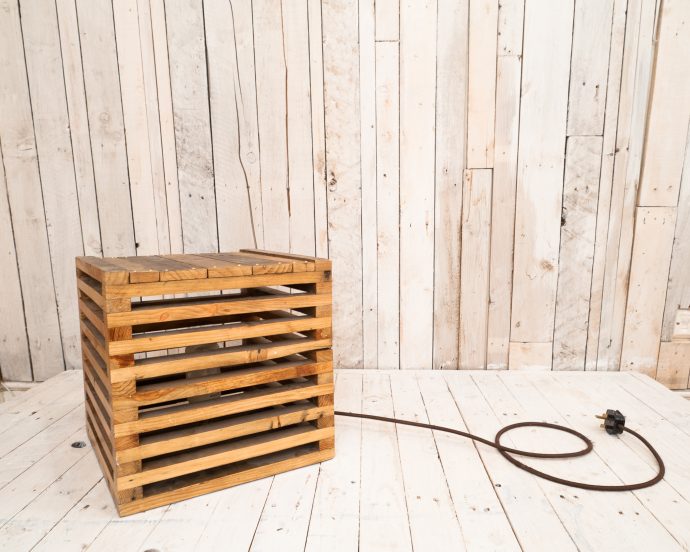East London Furniture

Originally trained in business systems, Australian Christian Dillon decided to leave the sunless cubicle of his office job for a trip to visit family in Perth. A “short holiday” turned into three years, as Christian worked alongside close family at Concreto, an art, design and construction company, pouring slabs of concrete in the Western Australian sun for everything from public artworks to tilt-up homes. The following year, Christian followed his partner Kate on a one-way, Frequent Flyer points-funded ticket to the UK. Once in London, Christian spent time working in a photography gallery before founding East London Furniture in 2011 with Ben Green and Reuben Le Provost (Ben has since moved back to Australia, while Reuben and Christian continue to run ELF day-to-day).

While East London’s range of furniture (lighting, coffee tables, desks, tables and chairs) is essentially crafted from born-again building waste, Christian and the team aim to keep the history of the humble materials while elevating their form and function. To this end, each piece of furniture is assigned a unique item number. All materials and their collection points are photographed and recorded in order to be able to trace the origins of each piece of furniture. To Christian, the key to working with waste is not just in the recycling; it’s in transformative reuse: from battered materials to industrial beauty. Here, he shares insights on the East London ethos.

How and when did East London Furniture first form?
It all started in March 2011, when I was given access to a space in Whitechapel run by Meanwhile Spaces, an amazing group that tackles the widespread issue of empty “high street” properties. Targeting areas more affected by recent economic downturns, they take on empty properties and offer them to various short-term projects at very reasonable rent. In fact, I think the rent on our first space was actually a table I built. The space was an empty shop on Whitechapel road that provided two key things: a place to work and direct access to a community. Working and being seen on a high street is so beneficial to start growing a concept. Following on from this space, we were subsequently given access to a series of empty shops around East London, from which we started building and selling our furniture.


Tell us about your philosophy…
Our philosophy is quite simple. We source all timber in a very traditional way, which is to use the materials close at hand. We also build everything ourselves in our own workshop. By using the materials that are already in the city, mostly waste materials that are a byproduct of the city’s building industry, then hopefully we limit the resources used in creating our furniture. We also encourage people to make things themselves. Working in empty shop spaces has meant our workshops have always been accessible and visible to an audience that might not normally be inclined to build their own furniture. But since forming, we have probably helped about 30 people come in and make something for themselves.

What kinds of things do you find when salvaging? What do you look for?
We find all sorts of things. In the UK, I think there are about 188 different types of pallets – we are always finding pallets. I think the most interesting thing I’ve salvaged from the street was a 1972 Vespa Veloce 150. They key to salvaging is to also be a bit of a hoarder! This is something I think I picked up from my sister. You need to see the potential in materials and even if you don’t have a use for them right now, a project will crop up where they will be used. Being able to store materials is definitely a key to sensible salvaging. The other side to that is you need to be prepared to say no to people who want to use you as dumping ground. But most quality materials will find a use. Scale is a difficult thing to achieve. Especially when creating a range of products. The nature of salvaged means the materials vary so much in quality and quantity that it becomes more challenging to consistently deliver a product of a necessary quality. It’s a combination of being in the right place at the right time, seeing the potential in materials, having storage space and suitable transport at the time! If you can combine all of these factors, there are real cost and aesthetic benefits to using these materials.


Do the materials dictate the design or do you have a form in mind already when you hunt for materials?
At the very beginning, the materials very much inspired the designs. And some products are a direct response to a particular type of materials. Like our coffee tables and stools that were designed to be built from the wood reclaimed from old pallets. But there is a risk with this approach to design, especially when working with waste, that the materials have too much influence over what is created. Being made from rubbish is not enough to necessitate existence. I believe the key to working with waste materials is to transform them to become something more inspiring, more useful or to eradicate the need for something else that is less worthy (excuse the use of “worthy”, a word I often cringe at when used in relation to recycling!).


What has the local community response been to your products and ethos? Who are your customers? East Londoners, or beyond?
Our project started on the street below the house I was living in on Broadway Market in East London. We didn’t have a yard, so we literally set up on the street. One of our first jobs was for the bar across the road – they saw us working. And it’s grown from there. The community closest is the one that is easiest to be part of so we seemed to find work from local people and businesses. I believe that most people already have a community around them who will help support any idea they might have. The first people we worked with were friends, or friends of friends or neighbours or local businesses. And from there, the community has slowly been growing to extend to other parts of London, across Europe, and of course back home in Australia. We recently sent a shipment of lights to Sydney. I am still undecided on the idea of shipping our products as in a way it defeats the concept of using local materials. But if we can use our products to push our philosophy and engage others to do something…

Are there like-minded designers, people, projects you admire?
Enzo Mari is a big influence. Gerrit Rietveld designed a series of crate furniture in 1934 which was an early example of reuse. But the first pallet chair I saw was designed by Nina Tolstrup from studiomama who works nearby in Bethnal Green. It was a major point when I first read about her idea – to make the chair yourself. She designed a chair and sold the plans to encourage people to build things themselves. Working with Simon Gauntlett and my aunties Terri and Marg Dillon at Concreto was also very inspiring. To understand that there could be creativity in what was essentially hard labour was a defining moment! I worked a lot with British photographer Garry Fabian Miller while working as a gallery assistant when I first came to London, and the way he approached his work and life as one cause I found really interesting.
Would you like to see global chapters of East London Furniture pop up? Any tips for salvaging and designing if we start a Northcote Furniture chapter?
It would be amazing to set up a similar project in other places dealing with the issues of waste management. I feel that Australians are already so far ahead of some other countries in the way recycling is ingrained in our conscience. It’s not really like that yet in the UK. It’s not uncommon to see people throw rubbish out of a car window straight onto the street. But there are definitely changes being made such as The City of London’s initiative to send zero waste to landfill. There are also movements like ‘designing out waste’ where building contractors will have to show their approach to waste management as a key criteria to winning a job. This was the case for many of the London Olympics 2012 contractors. It’s been proven that reuse is one of the best solutions to waste reduction, so I think that projects like ours are definitely an interesting way to tackle a range of social problems. It’s also interesting to think about how developing countries deal with waste. Simply driving down to Bunnings is not an option, so salvaging is the only way to attain materials. There is a group of artists in London called Giant Robots who build large-scale sculptures from materials they find. They were asked to take part in a festival in Ecuador and took the same approach they do in Europe, which is to turn up and use whatever materials they can find. But when they got there, they were startled to realise that there was no access to such materials as the local people were so thorough in putting anything useable to use. So in the end, I think they ended up renting the necessary materials which were then put to another use once the sculpture was dismantled. And to me this is the perfect situation.


Do you hope to see a day when East London Furniture becomes obsolete (no more salvageable timber going to landfill)? What would you focus on then?
We use these materials at the moment for a few reasons. One is their availability. The other is that they are the most accessible from a design and construction point. Anyone can buy a saw and work out how to use a hammer. And we are progressing quite well in finding new ways to use these materials. But the approach was never focused on wood. It was on waste. So as soon as we can afford the equipment to safely make coffee tables from alpha-emitting transuranic radionuclides [yuck! – ed], we’ll be right there!
